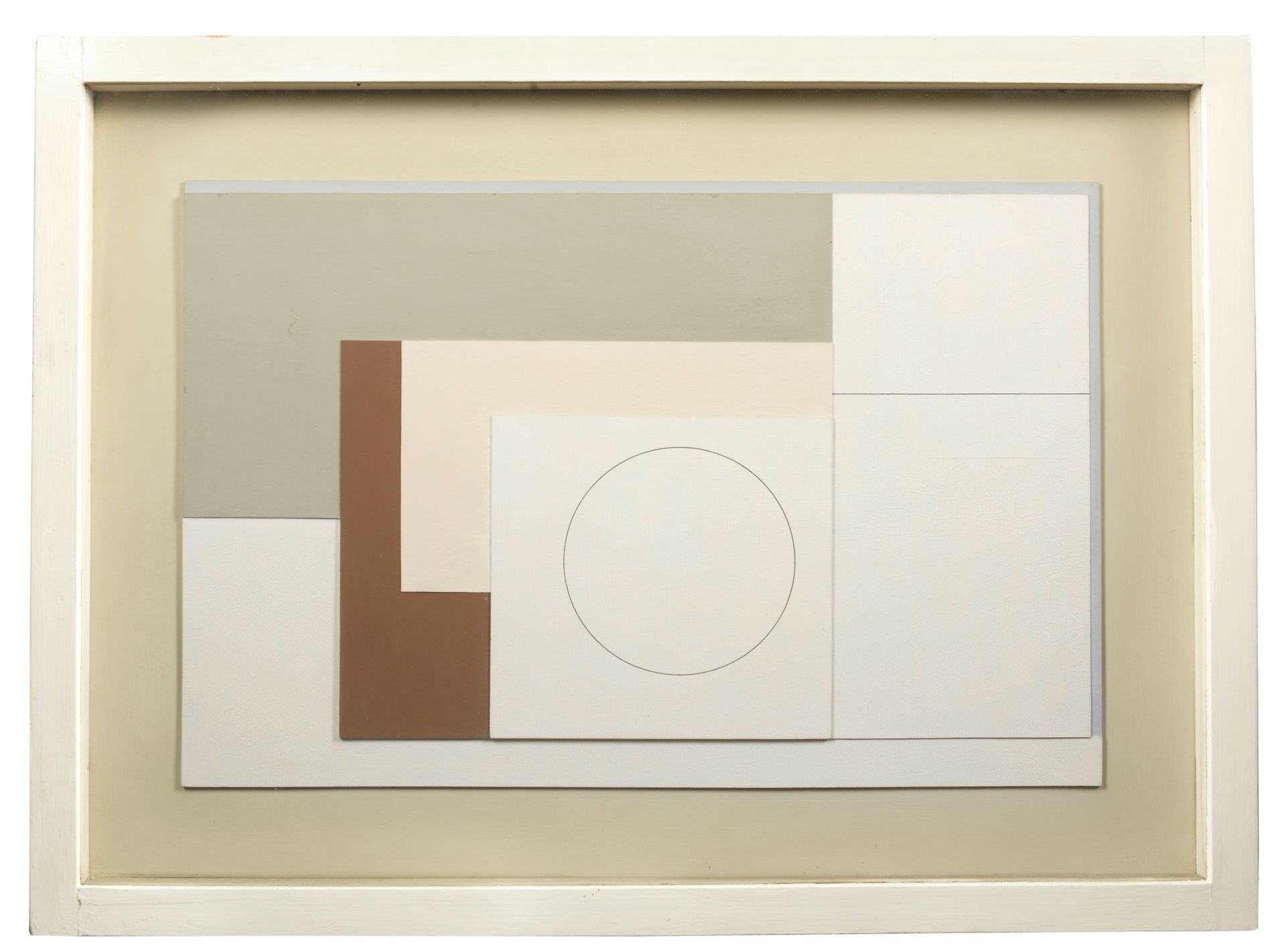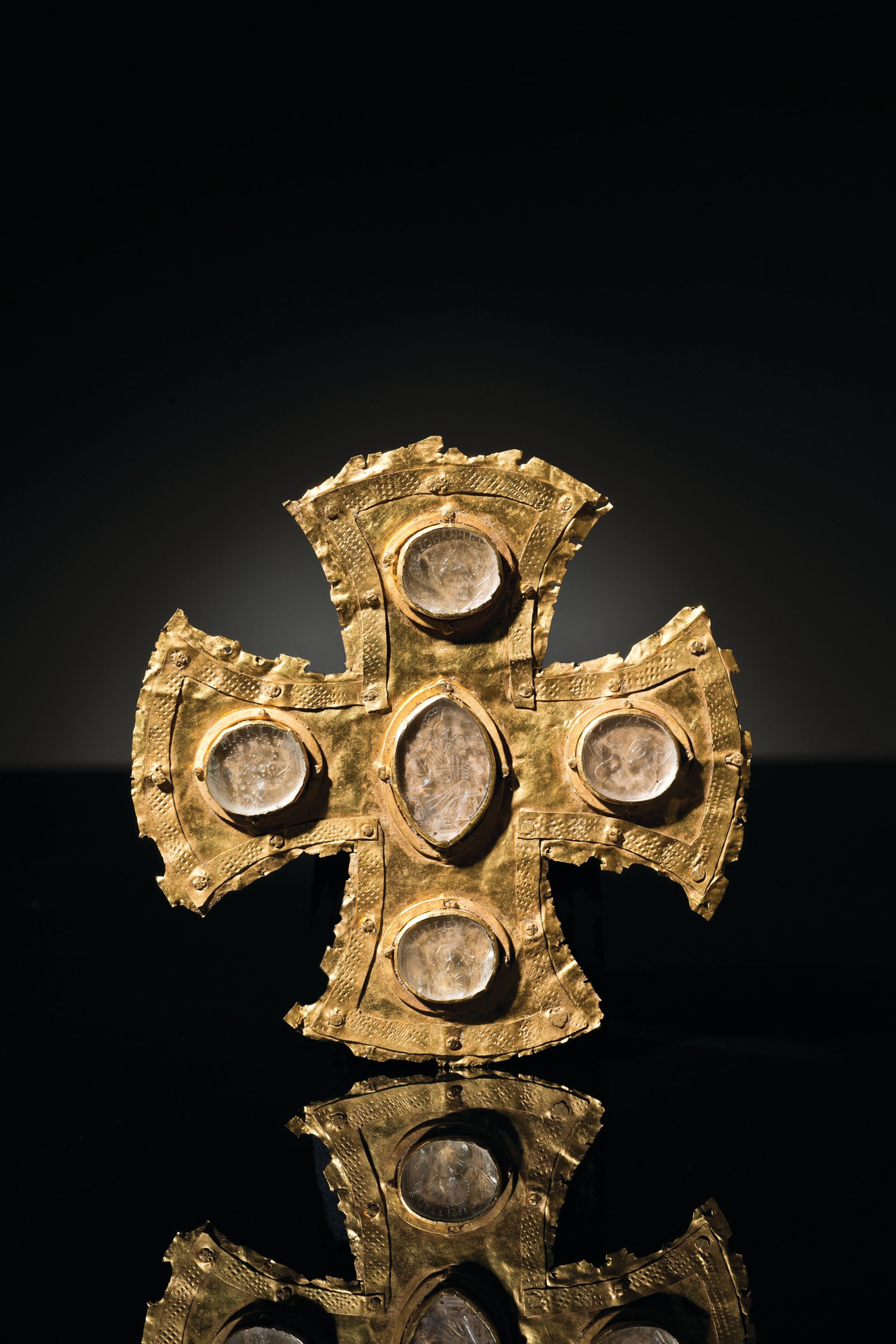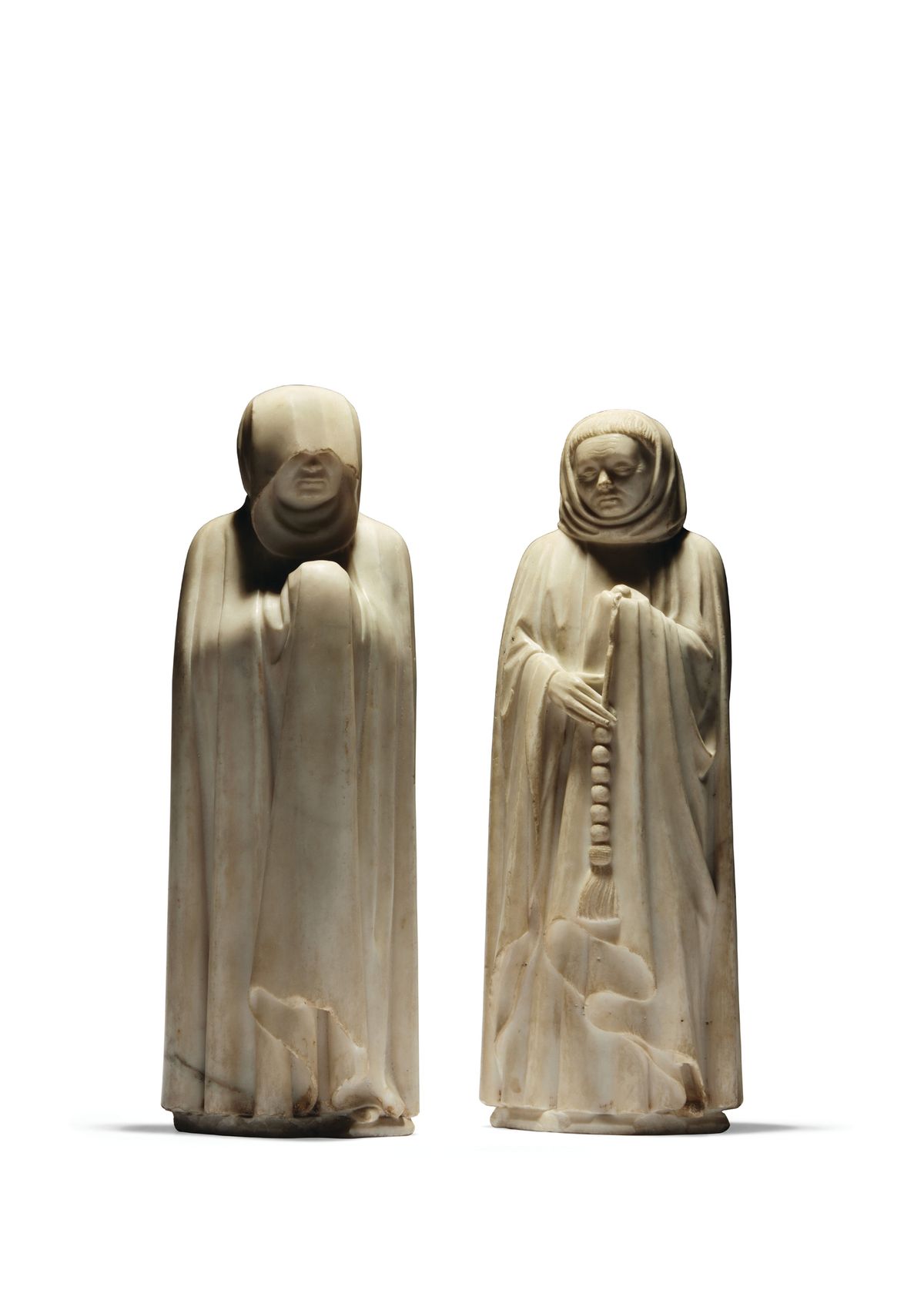Two marble mourners from the tomb of Jean de France, duc de Berry (1396-1416) European Sculpture and Works of Art, Christie’s, Paris, 15 June
Estimate €4.5m-€5.5m (sold for €4.4m hammer, €5m with premium; pre-empted by the Musée du Louvre)
Arguably the most important Medieval works to come to market in recent memory, the last two mourners in private hands from the tomb of Jean de France (1340-1416), duc de Berry, will be offered this week at Christie’s in Paris. The alabaster figures formed part of a procession of 40 mourners around the base of the tomb, made by Jean de Cambrai between 1396 and 1416 in Bourges, France. During the French Revolution, the tomb was vandalised and the mourners destroyed or scattered. Today 29 have been identified, with most in institutions including the Musée du Louvre in Paris and the Metropolitan Museum of Art in New York. These mourners have been in a French family’s collection since 1807.

Ben Nicholson, Painted Relief (1941) Modern British and Irish Art, Bonhams, London, 15 June
Estimate £400,000-£600,000 (sold for £400,000 hammer, £434,500 with premium)
An unlikely patron of the St Ives artists, Cyril Reddihough was a Yorkshire solicitor and amateur artist who became lifelong friends with Ben Nicholson. “Redd” bought Nicholson’s paintings throughout his career, as well as works by his first and second wives, Winifred Nicholson and Barbara Hepworth, and other Modern British artists, including Henry Moore, Christopher Wood and Alfred Wallis. Bonhams is offering 42 works from Reddihough’s collection, which the specialist Matthew Bradbury calls “the most comprehensive group of single-owner works by Ben Nicholson ever to appear at auction”. Painted Relief (1941), which Nicholson made after moving with Hepworth to St Ives, exemplifies the “extreme geometrical abstract work” influenced by his friendship with Piet Mondrian in Hampstead in the late 1930s.

Ottonian gold cross with five intaglios (9th-10th century) Haute Epoque, Piasa, Paris, 16 June
Estimate €300,000-€400,000 (sold for €150,000 hammer, €188,400 with premium)
This gold Ottonian cross, formed from a single sheet of gold leaf with five rock crystal intaglios depicting Christ in Majesty with the Tetramorph, is believed to have belonged to Giulio Rospigliosi, the short-lived Pope Clement IX (1667-69). The cross’s quality suggests it was made for a high-ranking cleric and the piece remained in the Rospigliosi family collection for several centuries before it was sold to the Iranian businessman Khadjavi Aghabozorg in 1931. It is unusual to find an extant set of intaglios from the period still in private hands. Six independent experts have contributed to Piasa’s catalogue, including Oleg Zastrow, who describes the cross as a perfect example of Ottonian art—a “rare and refined combination of the Germanic and Romano-Byzantine worlds”.


